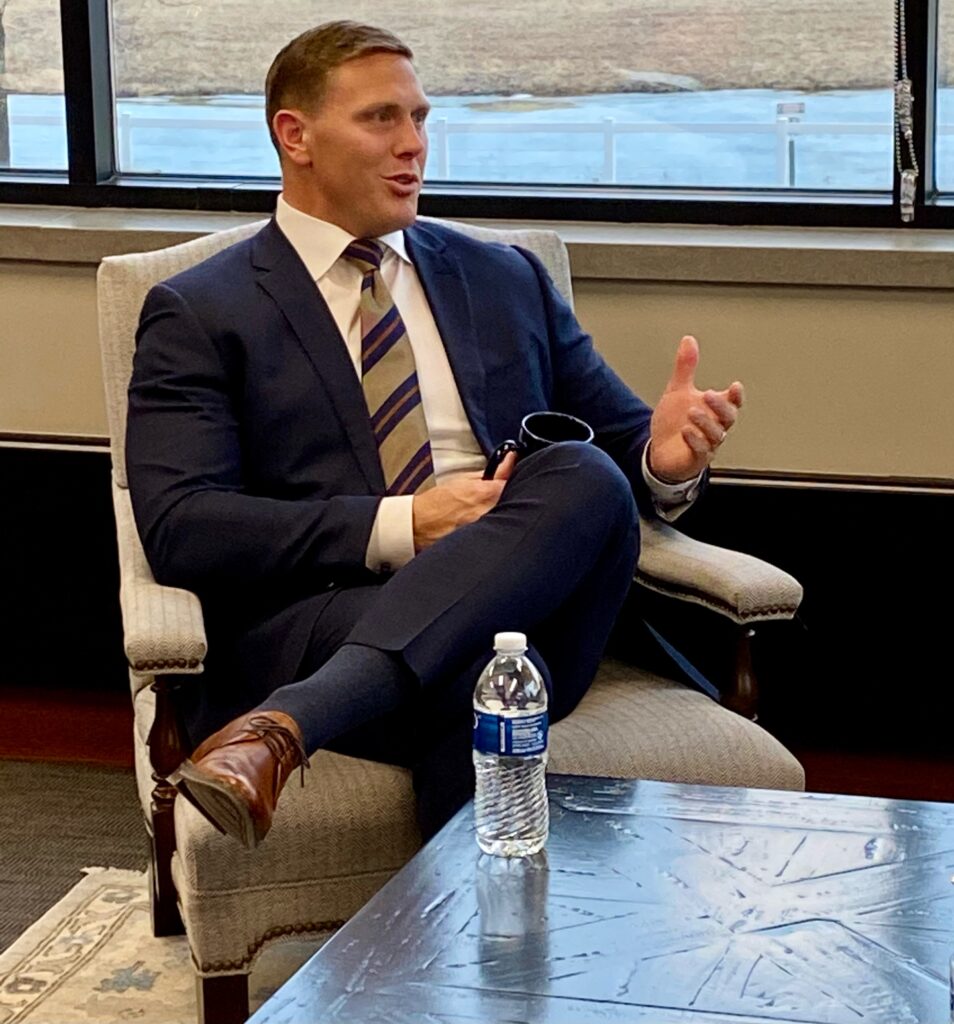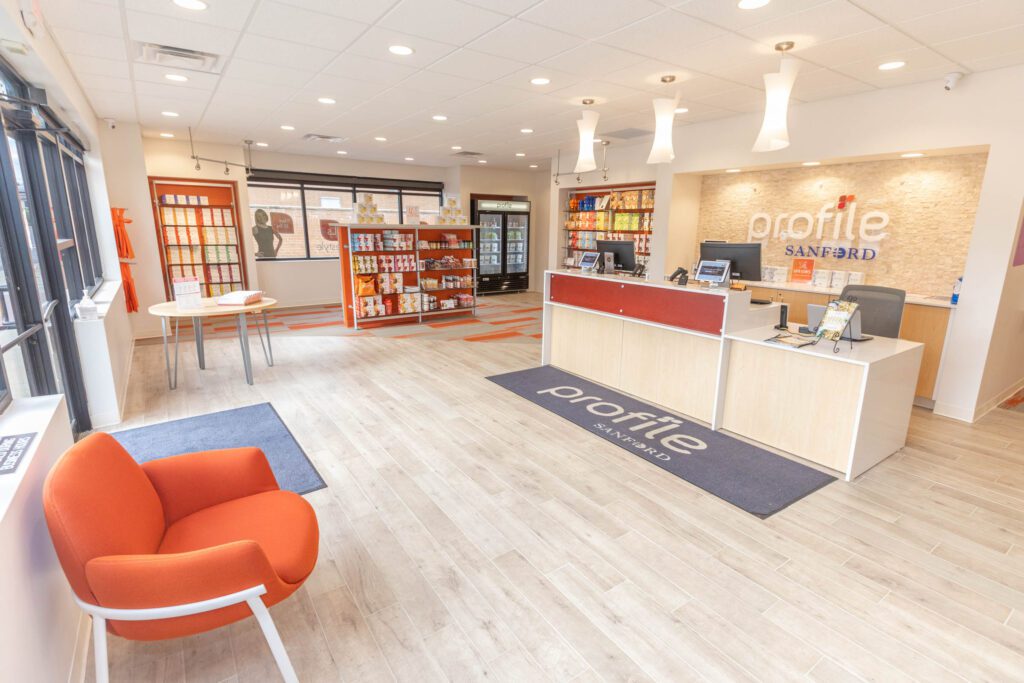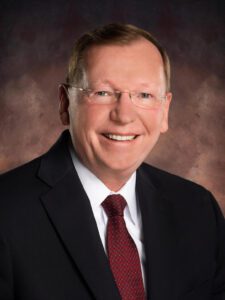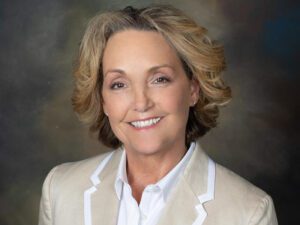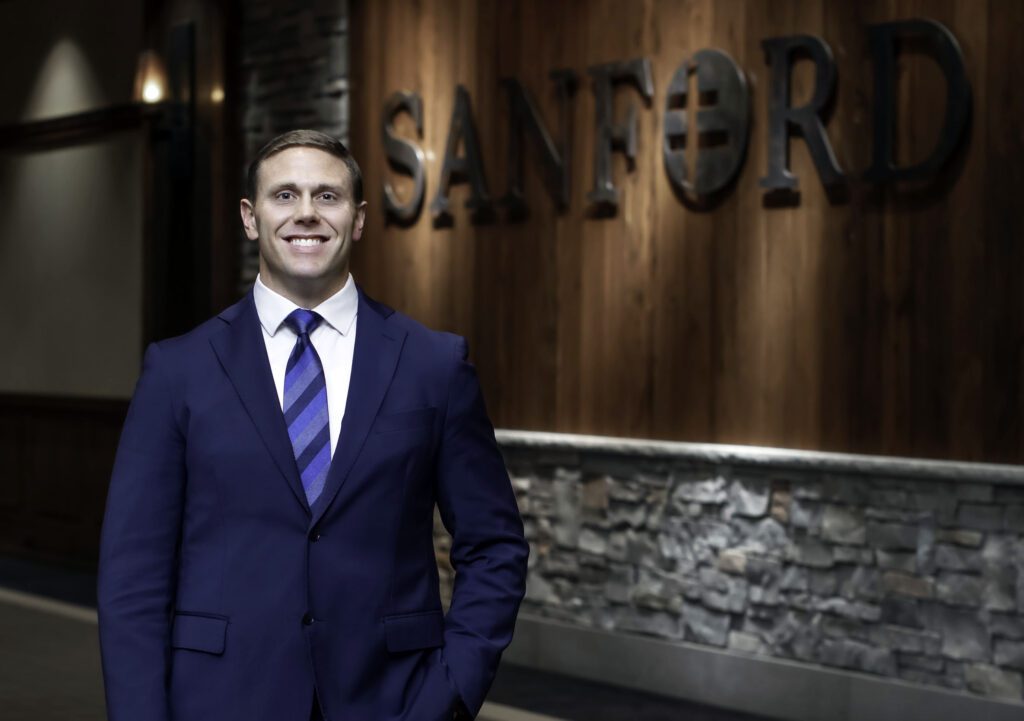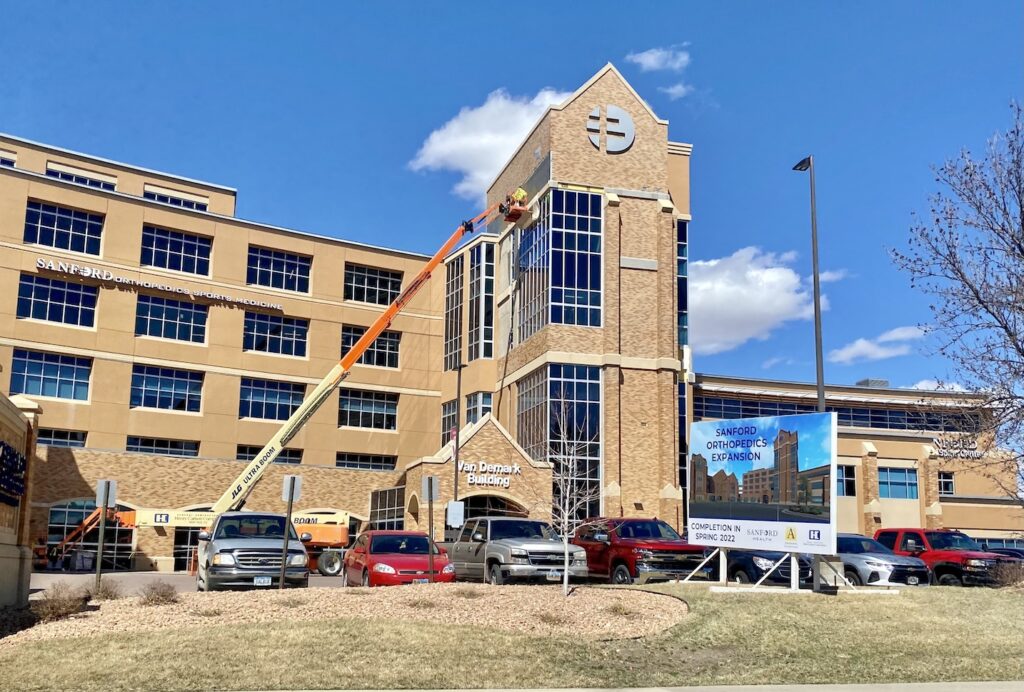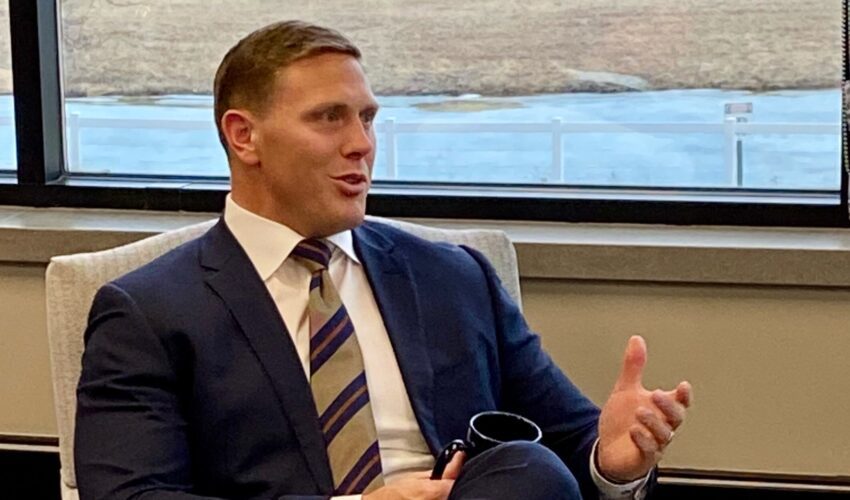Sanford’s Gassen casts vision: Becoming ‘the premier rural health system of the United States’
April 11, 2022
It has been nearly 18 months since Bill Gassen became CEO of Sanford Health.
And understanding the moves the Sioux Falls-based health system has made since then – and those it likely will make in the coming months and years – becomes easier after hearing Gassen talk about what he calls the system’s new aspirational goal:
“For the organization to become the premier rural health system of the United States,” Gassen said from his office in northeast Sioux Falls.
The premier rural health system of the United States.
“Rural,” by this definition, means any community of 50,000 people or fewer.
“And that’s the majority of communities we serve at Sanford Health,” Gassen said.
While the health system for decades could claim the adjective “aspirational,” in the past it hasn’t quite looked like this. Achieving greater scale through mergers, expanding into areas beyond traditional health care, building the brand internationally through major events – those were the aspirational hallmarks of the past.
Gassen calls this vision “setting our aspirations even higher” as the challenges around health care access, quality and sustainability in rural America are where “the hill is the steepest.”
By setting Sanford’s sights there, “the mountain didn’t get smaller,” he continued. “The hill got steeper. And we believe we have what it takes to scale that and meet those needs.”
Not only that, “I believe we have a moral imperative to meet those needs,” Gassen said. “We want to make certain one’s ZIP code does not determine the level of care that they receive.”
Establishing a vision
In assuming his leadership role, Gassen and his team took “a really good, hard objective look at who Sanford Health is today,” he said.
“What is it we do really, really well? What sets us apart, makes us unique and different across the industry? And as we did that, we stepped back, and some of that is demographics we serve today.”
Weighed against the backdrop of becoming the nation’s premier rural health system, other decisions become more clear — for example, the move to sell off Profile, the system’s science-based weight-management business, to a North Carolina-based investment company earlier this year.
“Oftentimes, you’ll hear businesses talk about ROI, return on investment. This decision for us was more about ROT, return on time,” Gassen said.
“When we think about the commitments that we made to the community we serve today … it is the best return on our time to double down and focus on providing incredible care in the clinics, medical centers, research, senior care. It’s care that we do really well, and that’s where we’ll focus on time and energy. I’m proud of the work Profile has done and the incredible team that grew it and allowed us to transfer that off.”
Sanford’s aspirational goals in research haven’t changed, he said.
“We’re going to cure type 1 diabetes,” Gassen said, while being quick to add “a disproportionate population that’s affected by those ailments lives in rural America.”
In World Clinics, where Sanford has operations on nearly every continent, “the vast majority of care we’re providing is in rural communities,” Gassen said. “So it’s a way to continue to advance the mission and an incredible way to learn about doing a better job providing care.”
However, the goal is not to “plant more flags in the ground,” he continued.
“I want those flags to be deeper in the ground. We’re not done growing by any stretch of the imagination. I just want to make sure when we do, those roots are really, really deep.”
In parallel with setting the new strategic vision, Sanford has focused on its governance.
The new board of trustees chair, Neil Gulsvig, is the founder and CEO of Wisconsin-based Align and ActivLife, software firms focused on helping providers improve quality, employee engagement, customer experience and well-being in the senior care profession. In announcing his appointment, Sanford Health described Gulsvig as “a nationally known expert with decades of experience in the post-acute health care sector.”
In January, Marnie Herrmann, a business and civic leader from Rapid City, was elected to replace Barb Everist of Sioux Falls, whose tenure on the board had reached 19 years.
Herrmann also has served on the Good Samaritan Society board of directors since 2019 and is currently vice chair. She is the chief banking officer for Security First Bank.
“We stood up new committees, a new nomination and governance committee that is tasked with identifying the profile of the right trustee for this organization,” Gassen said.
“How do we select those individuals and continue to evaluate individuals as we move forward to make certain it’s meeting the needs of an ever-changing organization in an industry that’s rapidly changing. It’s making sure we’re positioning the board just like the management team and the resources of the organization to meet the needs of the communities we serve.”
Investing in places, people
“Optimistic but tired,” is how Gassen characterizes the system’s more than 50,000 employees, more than two years into the COVID-19 pandemic that thankfully now is putting less pressure on the health care field.
“I think if we’re all truthful with ourselves … whether you’re inside health care or outside health care, it’s been a really challenging couple of years,” Gassen said. “And it’s not just the challenges people face inside the workplace but the challenges they face at home, the challenges you face with uncertainty around health, especially for the vulnerable.”
It all comes with health care workers into the workplace, including a more challenging environment once they get there, and “that causes our people to be tired,” he said. “That’s not a sign of weakness or waning desire to answer the call; that’s just reality as a human.”
There has been “an uptick” in those who retired early or exited the profession, he acknowledged.
“We have seen those numbers slow and now start to turn in the right direction, especially over the last few months,” Gassen said, while estimating the system’s early decision to mandate the COVID-19 vaccine resulted in the departure of less than a half-percent of the workforce.
“The optimistic side for our people is they’re energized around the focus of this organization; they’re energized around the commitment of this organization to act with the best interest of our patients, our residents, our people and the communities that we serve.”
The need to grow the workforce has stemmed just as much from the population influx into Sioux Falls and other communities Sanford serves, he added.
“The demand is increasing, which is a blessing, but at the same time it requires us to innovate, and in some cases we need more talent, and in other cases we need to think different about how we provide the care we provide.”
Sanford’s new virtual health care center that is scheduled to break ground later this year in northwest Sioux Falls is one example both of how the system is projected to meet future demand and work toward its goal of enhancing rural care.
The Good Samaritan Society also fits that vision, Gassen said.
“Our senior care, that arm of the organization, continues to be incredibly important,” he said. “That’s a necessary component to achieve that aspiration. If I’m going to stand before a community and say Sanford Health is committed to meeting your needs, I need to be able to say I can meet the senior (needs).”
Whether it’s senior living or clinical services, “you’ll see an increased investment and focus on those services in our core footprint: North Dakota, South Dakota, Minnesota, Iowa, Nebraska,” Gassen said. “Saying we’re committed to growing where we’re planted means as we look toward the future and the type of growth we’re going to have, we do so through the lens of saying, ‘How do we do a better job of meeting the needs of communities we’re already committed to?’”
Orthopedic investment
The competitive landscape across Sanford’s footprint has long been centered in Sioux Falls – and perhaps no more so than in orthopedics, where Avera Health has added to its team in recent years and Orthopedic Institute came together with Core Orthopedics & Sports a few years ago.
Sanford has seen the departure of multiple longtime orthopedic surgeons in recent months.
“All I can say is I’m grateful for the wonderful patient care they provided at Sanford Health, and I wish them and their patients all the best in the future, and I’m confident they’re going to continue to provide great patient care,” Gassen said.
“My focus is on the incredible team we have here today that I know are leaders today and tomorrow. They’re doing incredible research in orthopedics and providing amazing surgical care and providing care for youth athletes, our high schoolers, and I’m excited to be investing in them and continue to see them drive the vision for the organization.”
Sanford plans to recruit 10 orthopedic surgeons in the next two to three years, he said.
“We are actively recruiting, and one thing that’s important for people to know is through this transition our focus has been and remains on patient care, and I want to thank those clinicians who have departed because we’ve done that in a very coordinated way that allows us to make sure the best interest of the patient remains,” Gassen said.
Sanford announced plans for a long-awaited new orthopedic hospital the week before the first COVID-19 case was detected in Sioux Falls. Designed for same-day surgeries with 12 operating rooms and a walk-in clinic, the 163,000-square-foot hospital originally was scheduled to open in 2023, along with a two-story expansion of the Van Demark Building that would have been open around now.
That’s still the plan, Gassen said, though no timeline has been finalized.
“The scope has not changed,” he said. “So that’s the $20 million clinic building, $150 million building for the orthopedic surgical suites, and that’s continuing. All things through the pandemic had to shift and focus on meeting immediate needs, but we’re unwavering in that focus going forward. Nothing about personnel changes is having any impact whatever on that building.”
That’s part of multiple investments in the main campus, Gassen added. A building is under construction for gastroenterology, and more details about plans for the area are expected in the coming months.
“Part of the advantage of the renewed focus of this organization is you’re going to see us pour resources into places we believe will have the greatest impact on residents,” Gassen said. “The Sioux Falls main medical center campus is absolutely one of those critical areas.”

